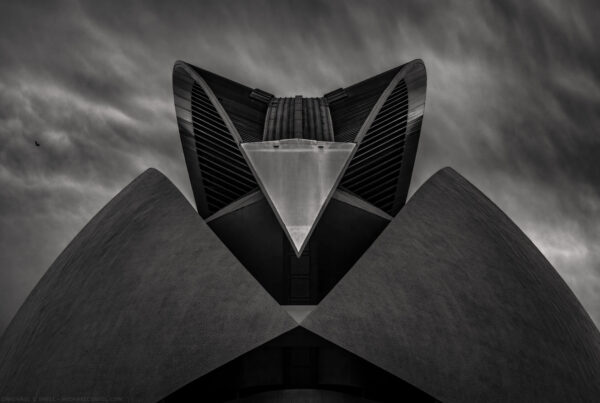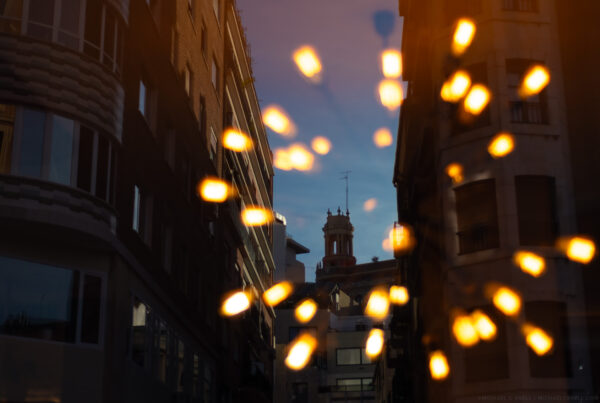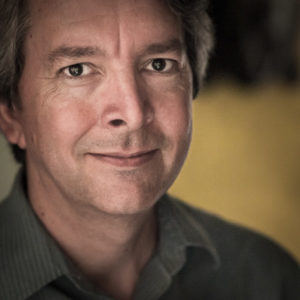Street Photography in Cuenca, Spain
I know a lot of photographers argue about what is or isn’t really “street photography,” but this post is about photographing one street. It goes by three names, but it’s a continuation of the same route. It may not be your definition of street photography, but it is — literally — about photographing a street. Just wanted to get that out there from the start. 🙂
Continuing with the report of my days in Cuenca, Spain, last Fall, I thought I’d focus on a street that I found myself spending a lot of time on. As I mentioned in an earlier post, Cuenca sits atop a narrow stone ridge between two river gorges. In places, it is little more than a single row of buildings lining one street — north of the Plaza Mayor it is Calle San Pedro, and south of the plaza it is called Calle Alfonso VIII.
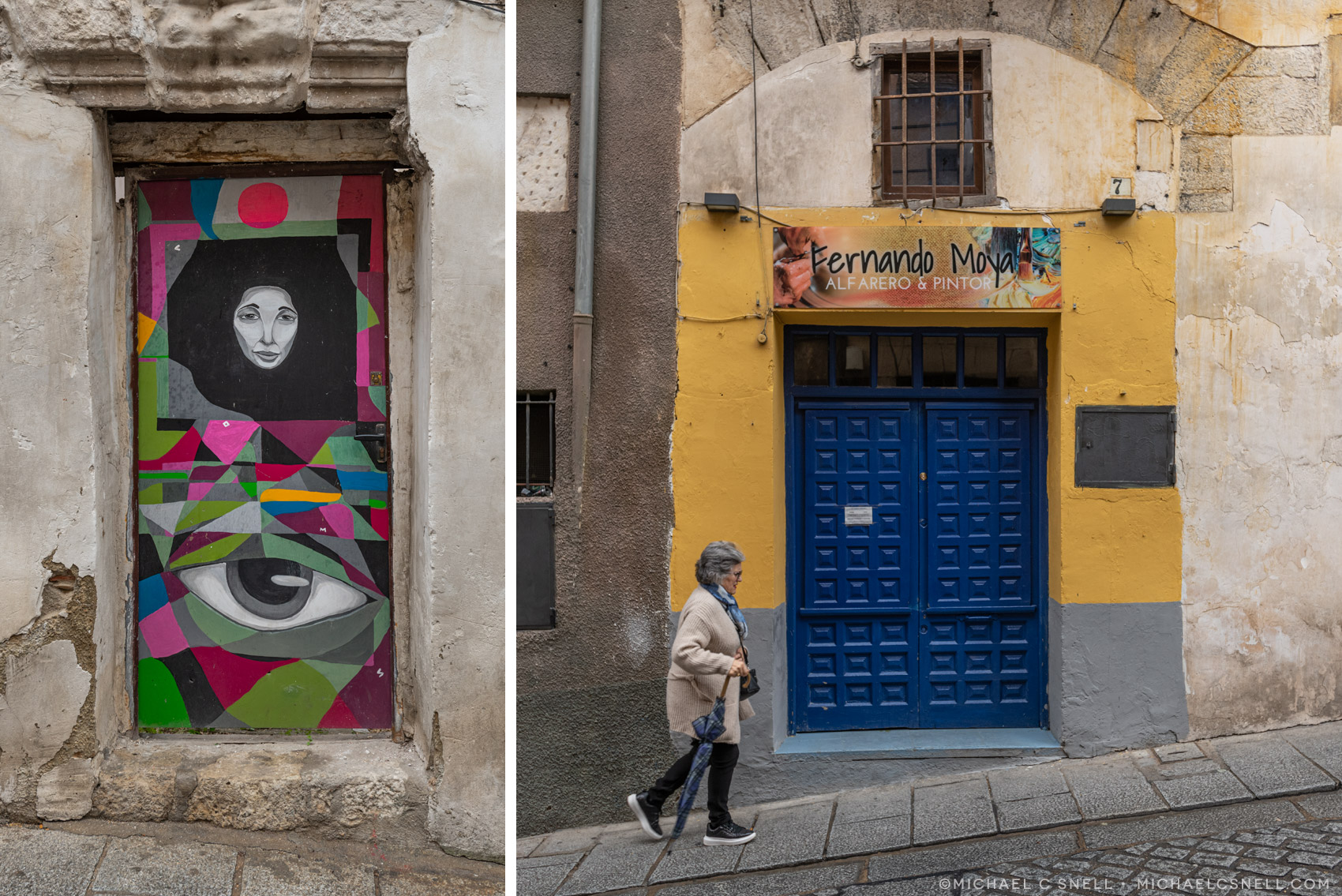
I showed a few photos of Calle San Pedro in my last post, as it was the final bit of my hike into town from the Parador when taking the “wilderness route.” Above you see a couple more. It feels older, architecturally, and I suppose it is since it is the part just inside the city gate that leads to the Plaza Mayor. One would assume the city started here as a fortified settlement and then spilled down the cliffs to the south as more space was needed. I have not researched Cuenca to the degree that I can say that with certainty, but it is the feeling I got from walking this street repeatedly.

When you reach the Plaza Mayor, it is dominated by the Cuenca Cathedral (above left). On the south end of the plaza is the town hall (above right) that the street actually passes through, becoming Calle Alfonso VIII on the other side.
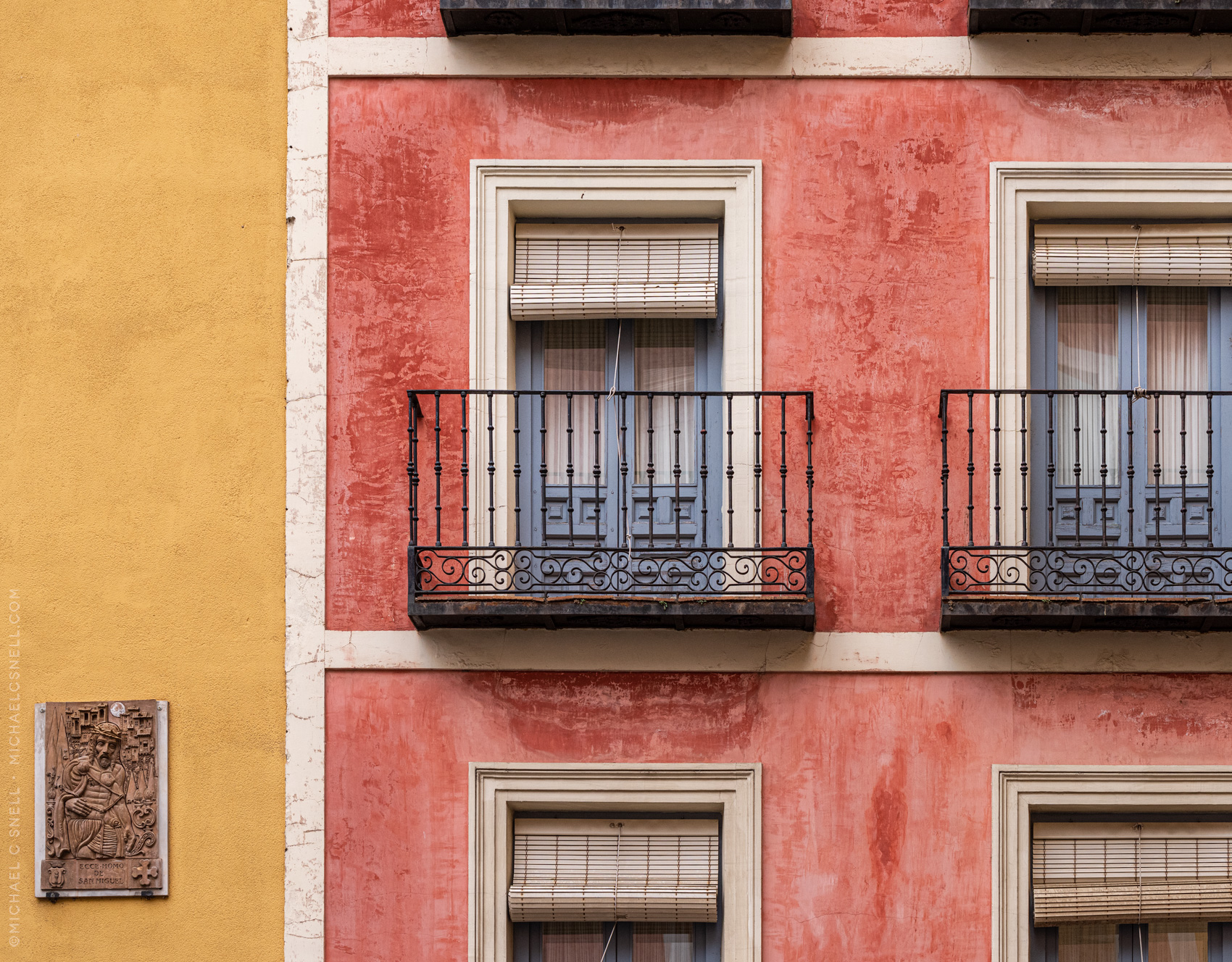
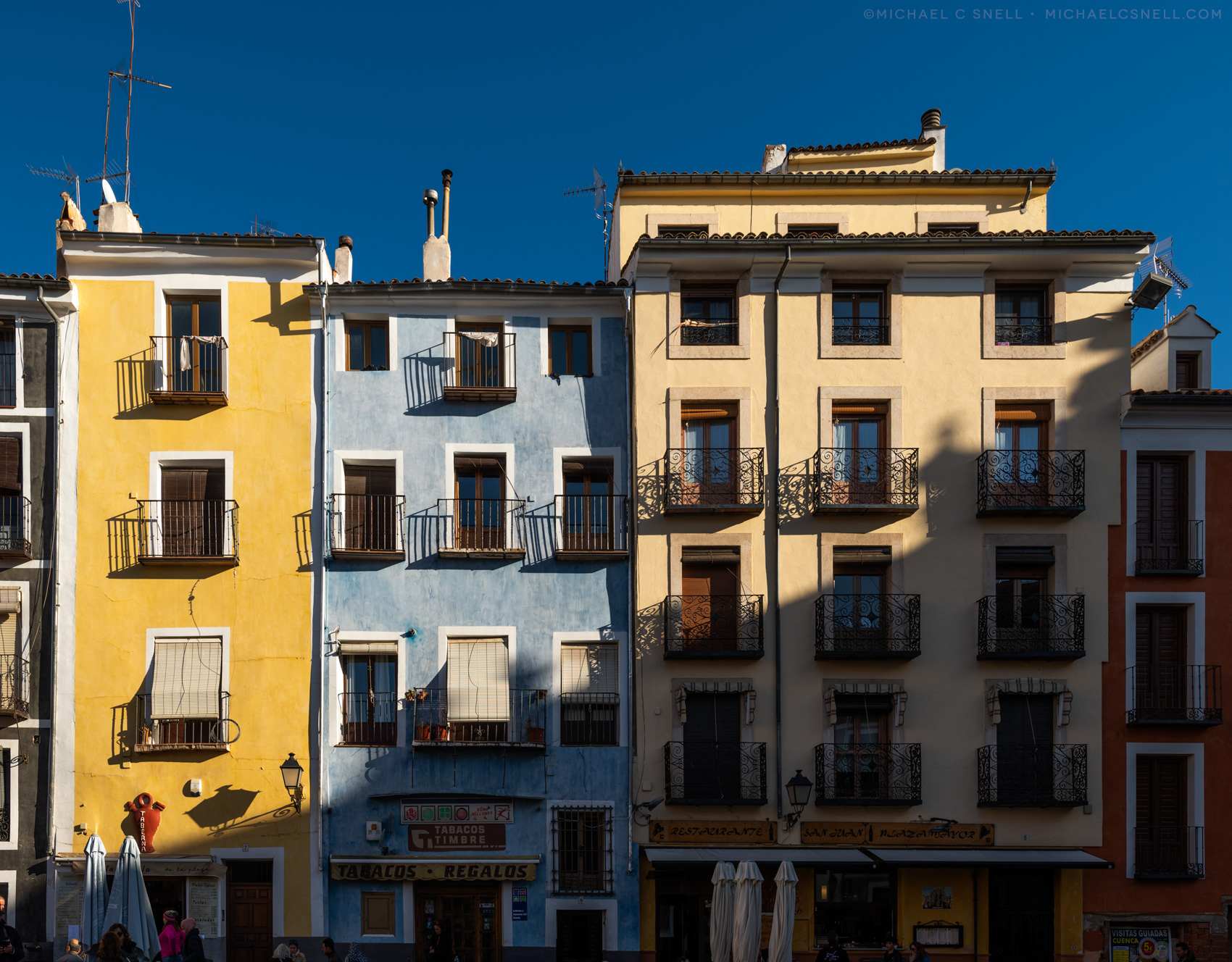
Around the Plaza Mayor is where things start to get really colorful. You find more stucco on the facades here and it is often washed in layers of yellow, orange and red paints that have aged to look like watercolors. Once you pass through the Town Hall going south, the street narrows again and becomes a canyon of color and textures.
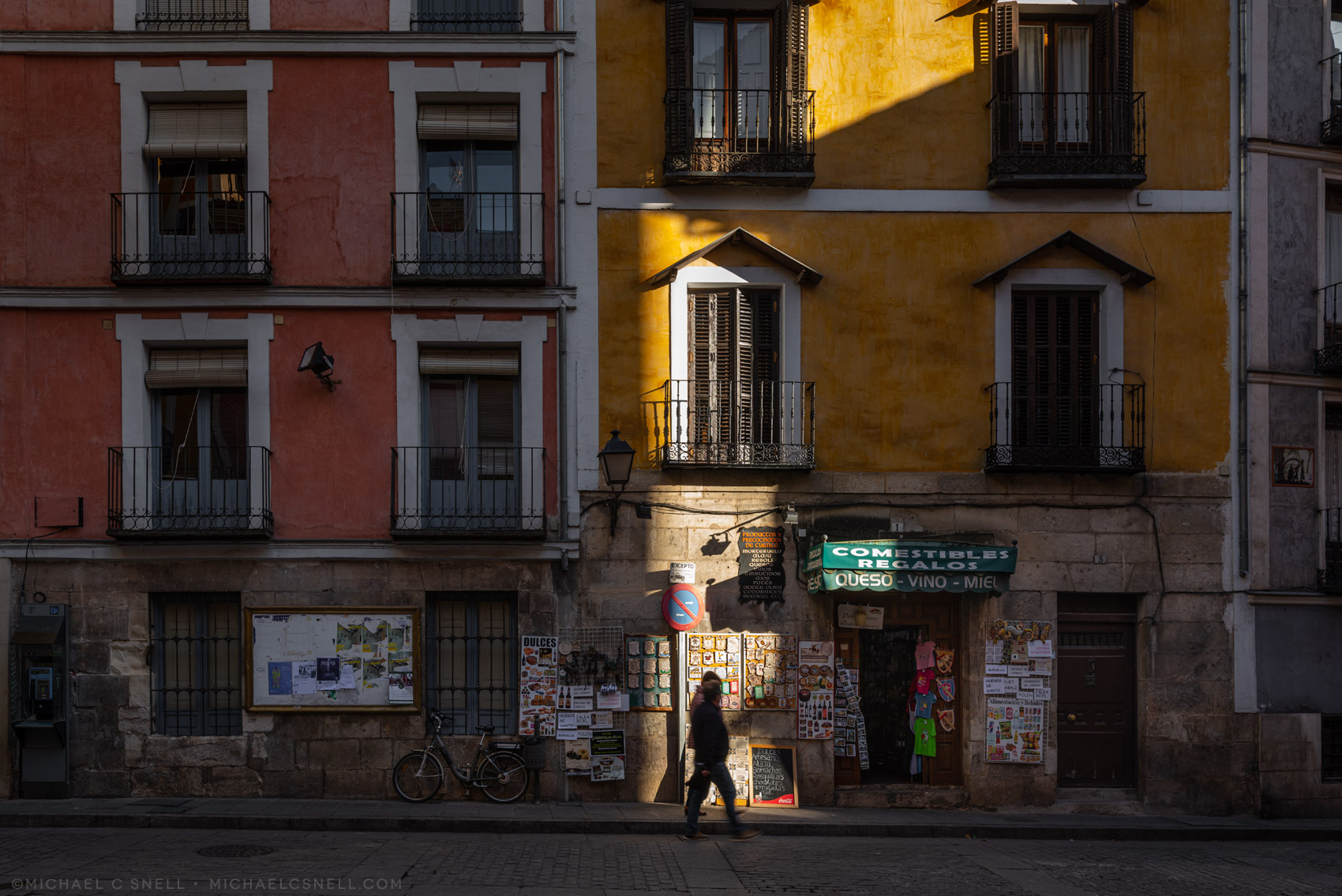
I kept re-visiting this stretch of Calle Alfonso VIII to see how it changed in different lighting conditions. On overcast days, it became a warm, soft glow of color but, when the sun came out, shafts of light would paint sections of the walls in screamingly bright patches of warmth.
Photo note: I was careful with my exposure on these sunny days. If you trust your camera to choose the exposure by using some automatic setting, you will likely get very different results where the bright patches are completely washed out. In my case, I was most interested in the bright bits and didn’t care if the shadow areas went very dark. Compared to what my camera would have chosen as the “correct” exposure, I was underexposing. But I don’t think there is such a thing as a “correct” exposure, other than the one that achieves what you want. I wanted to expose to preserve the highlights at the expense of letting some shadow detail go, so that was “correct” for me. Using the manual mode on your camera helps you to make these decisions for yourself, rather than leaving things up to the camera which may have a very different idea of what is “correct.”
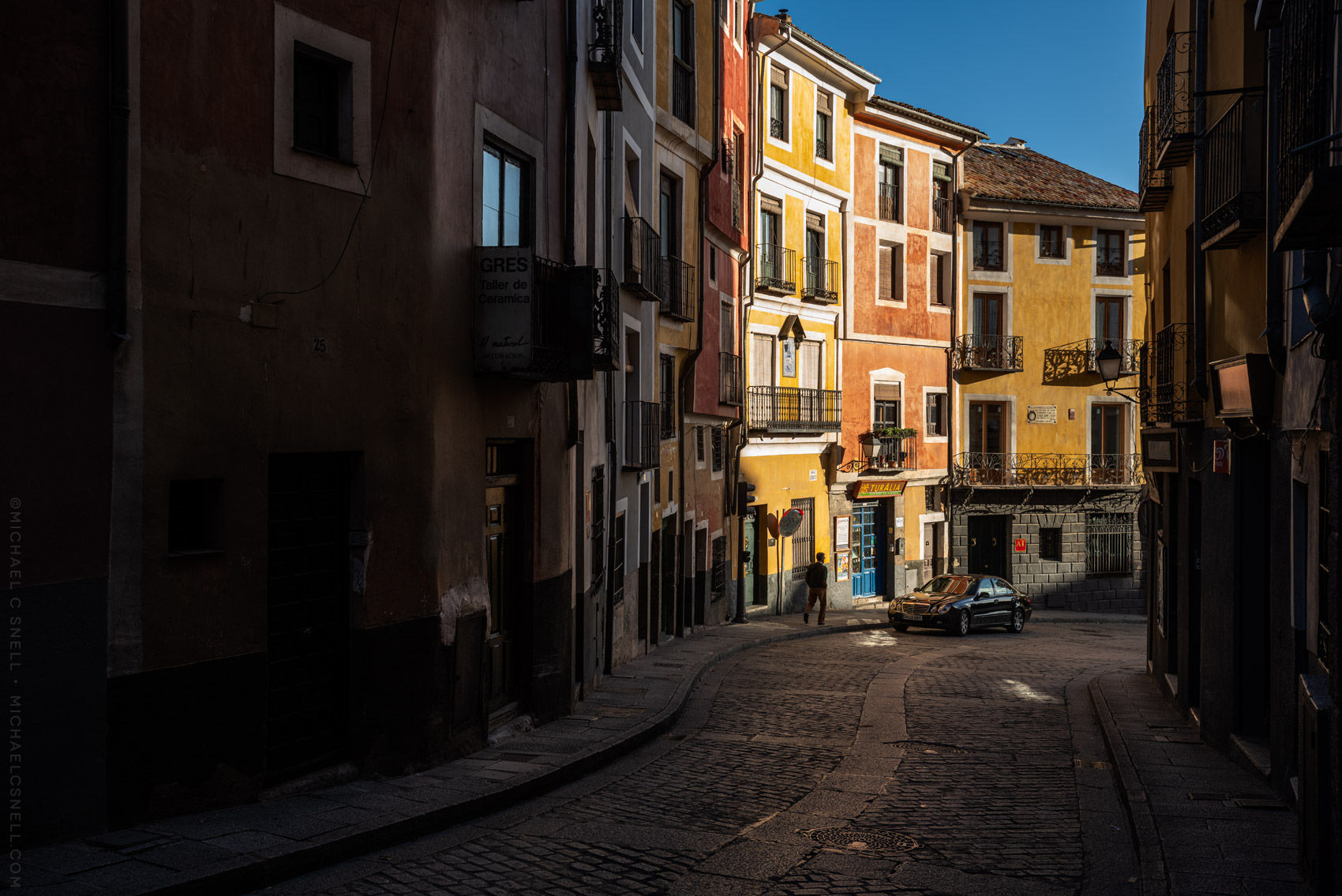
Continuing south from the plaza, you eventually come to a spot where the street splits and Calle Mosén Diego de Valera veers off to the right. This intersection is one of my favorite spots along the route. The space widens out a bit here and the two streets continue at different slopes so you have the opportunity to get a wide variety of views.
It’s also interesting to note that there is a stoplight here because Calle Alfonso VIII is so narrow from here to the Plaza Mayor that it only allows for one-way traffic. The solution is similar to how flagmen are used at road construction sites here in the US. There is a stop light at this intersection and another at the plaza. If your light is red, that means that traffic is currently coming toward you. When it’s green, it’s your turn to use the street and the traffic is held at the other end.
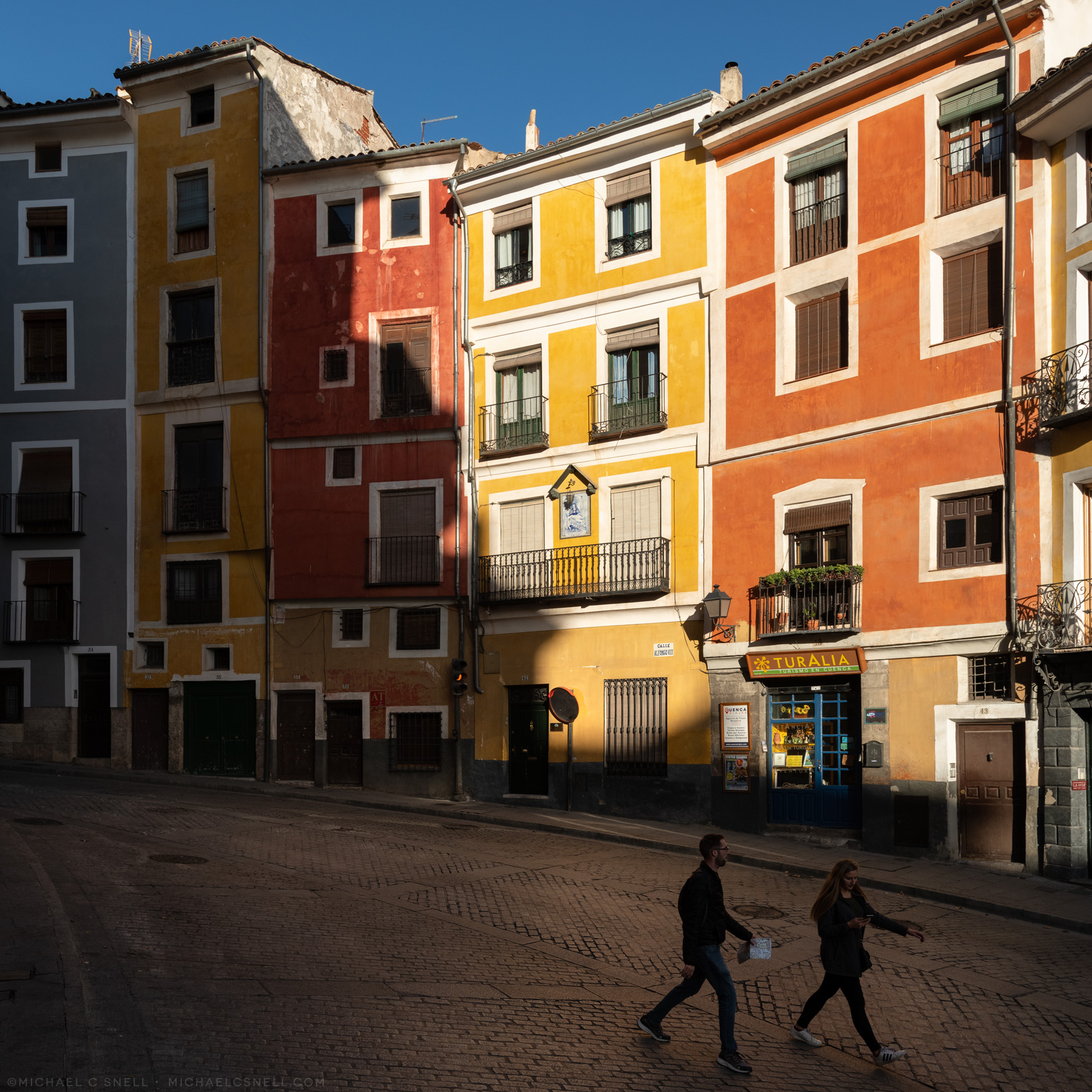
I loved this corner. One series of buildings particularly interested me for its combination of doors and windows that fit no particular pattern. The slope of the street dictated the elevation of each door, resulting in a wonderfully random facade. I spent quite a bit of time here, just waiting for different folks to walk past and become part of the composition.

Continuing down toward the “new” town, the architecture continues to change and evolve. I imagine these buildings are still quite old, but they seemed more organized in their facades and there was more detail surrounding windows and doors.

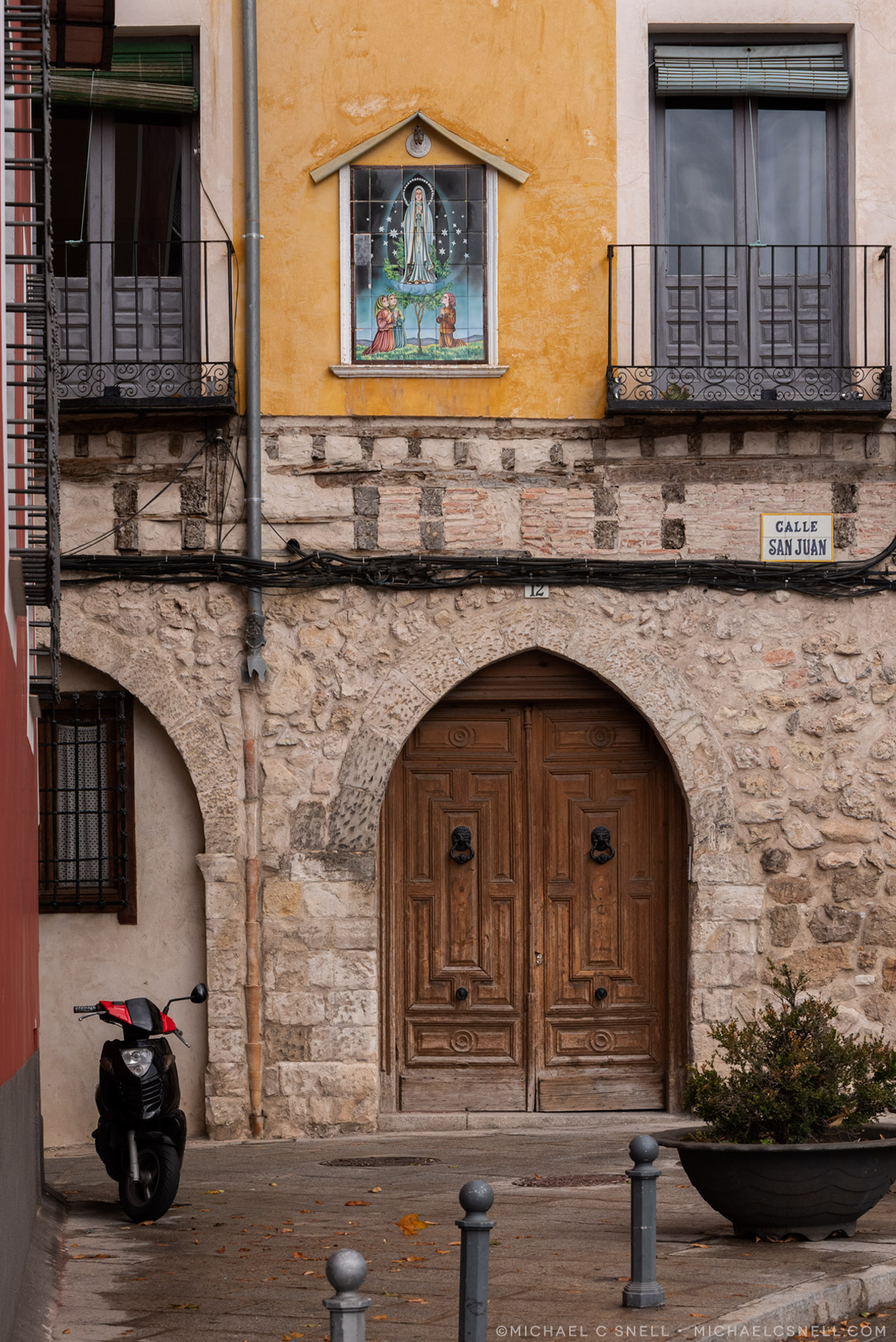
These last two shots are actually from Calle San Juan, just after the ending of Calle Alfonso VIII, although when walking it, you’d think you were still on the same street. The final image is at the point where the street for cars takes a couple of sharp turns and opens up a bit, but there is actually a continuation for pedestrians that follows the line set by Calle Alfonso VIII that is too narrow for cars and has steps cut in to help with the steep slope down. At the end of it, you find yourself in a park along the river with another entire set of paths to follow. Cuenca is truly a walker’s dream, if you don’t mind the elevation changes.
